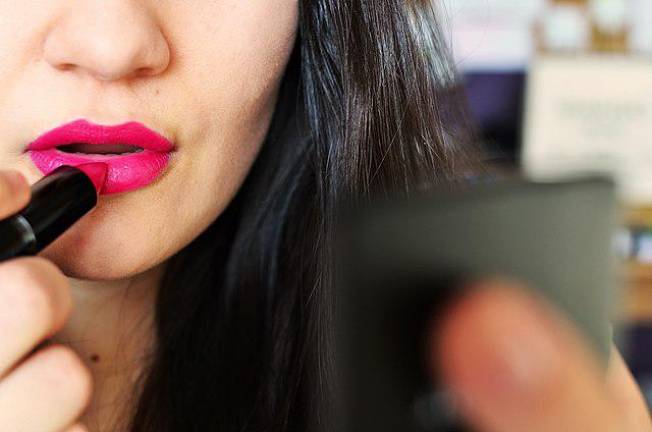US Tightening Labeling Laws on Cosmetics But Regs Still Far More Lax Than Europe
Cosmetics are getting a new look but the USA still lags Europe in cracking down on harmful substances on everything from lipstick to after shave. Red dye #40, deemed a carcinogen is already banned but other harmful substances such as formaldehyde, for instance, will only be banned come next April.

Ladies: How safe is your lipstick? Gentlemen: How about your aftershave?
It’s not a simple question. European nations have outlawed more than 2,400 hazardous chemicals from cosmetics. Americans have banned only 11, primarily known carcinogens such as formaldehyde (which the FDA proposes to ban from hair straighteners as of next April) and the already-banned bright but also cancer-causing Red Dye #40.
In 1938, a Food, Drug and Cosmetic Act said a lot about food labels but limited the Food and Drug Administration’s authority over beauty products. After that, nothing much changed until last year when three determined women–Senator Susan Collins, Patty Murray, and the late Dianne Feinstein–convinced Congress to include the Modernization of Cosmetics Regulation Act (MoCRA) in the 2022 Omnibus Appropriations act.
The new cosmetics rules, which go into effect next month, are several steps forward. Cosmetics manufacturers must now list flavor and fragrance ingredients on the label; let regulators know if consumers run into health problems with their products; and recall any shown to be harmful.
That’s good but not perfect, says Janet Nudelman, director of the Campaign for Safe Cosmetics. In an interview with Mother Jones, she pointed to a “gaping hole” in the law, the fact that cosmetic companies are still not required to test their products to prove they’re safe before they hit your drugstore shelves .
Nonetheless, a cosmetic label will name the product, tell you what’s in it, how much it weighs, where it was made, and print required warnings such as “for external use only” in letters at least 1/16th of an inch high. The ingredients themselves may be listed either alphabetically or “ in descending order of prominence,” meaning the one there’s most of comes first.
As for actual ingredient names, that can be puzzling. They may be printed in one of three ways: English (i.e. sweet almond oil), the “common or usual” name which often means Latin (i.e. Prunus Amygdalus Dulcus rather than sweet almond), or by a chemical name, abbreviation, or add-on such as PEG or polymer or -siloxane, all pretty much Greek to those of us who didn’t ace Chem 101.
As long as a cosmetic doesn’t make people sneeze or blister their skin, the usual reaction to confusing label listings is no reaction. But for the truly curious customer, there’s a translator waiting in the wings: The Derm Review.
As its name implies, this website reviews cosmetics, and, in its own words, provides a platform that allows consumers to rate their favorite or least favorite skin care products. Better yet it includes a dictionary of ingredients that translates those Latin, Greek, chemical, and sophisticated English names and label phrases into words any lipstick or aftershave consumer can understand. To access all this good stuff, copy, paste and click on https://thedermreview.com/cosmetic-ingredients/
Or simply ditch the jars and tubes and bottles and powders and go with Louisa May Alcott’s long ago but still wise words: “Love is a great beautifier.”
Gorgeous!